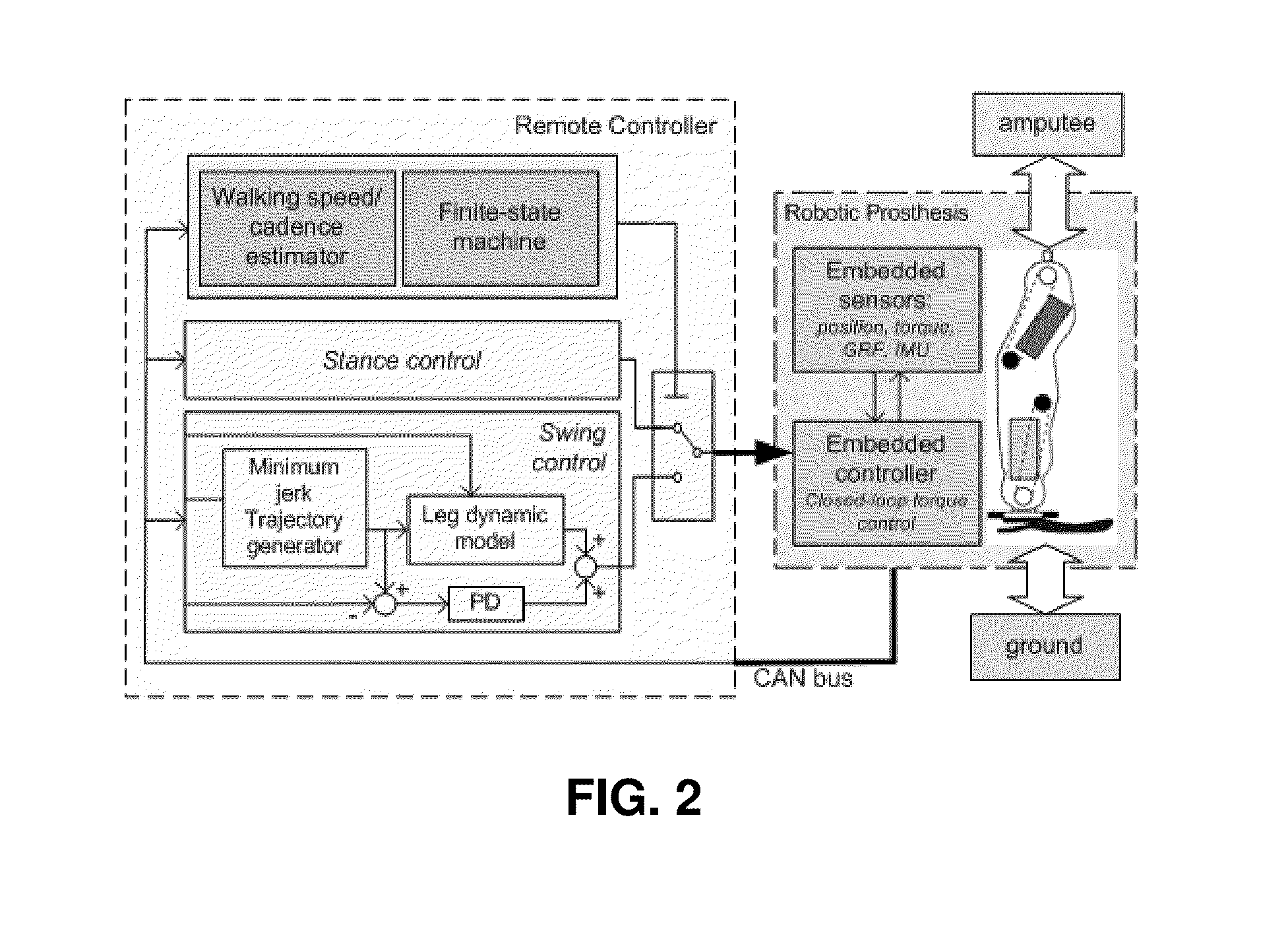Minimum Jerk Swing Control for Assistive Device
- Summary
- Abstract
- Description
- Claims
- Application Information
AI Technical Summary
Benefits of technology
Problems solved by technology
Method used
Image
Examples
Embodiment Construction
[0013]We propose a new control approach for swing phase that relies on a minimum jerk trajectory. Using this approach, we can obtain a biologically accurate swing movement with direct control of swing duration that is independent of joint angle and velocity at the stance-to-swing phase transition. Direct control of swing movement duration facilitates natural gait symmetry for any walking speed and cadence. Swing phase duration can be set to be proportional to stance phase duration at each step in order to restore the physiological relationship between the two phases of the gait cycle. Minimum jerk control can attain biologically appropriate swing movement without subject- or speed-specific tuning. Notably, we can enforce a desired maximum knee flexion in swing phase independent of walking speed and cadence, thus ensuring proper foot clearance in all conditions. Moreover, we can regulate the desired swing terminal angle as needed for walking up or down a ramp, again independently of ...
PUM
 Login to View More
Login to View More Abstract
Description
Claims
Application Information
 Login to View More
Login to View More - R&D
- Intellectual Property
- Life Sciences
- Materials
- Tech Scout
- Unparalleled Data Quality
- Higher Quality Content
- 60% Fewer Hallucinations
Browse by: Latest US Patents, China's latest patents, Technical Efficacy Thesaurus, Application Domain, Technology Topic, Popular Technical Reports.
© 2025 PatSnap. All rights reserved.Legal|Privacy policy|Modern Slavery Act Transparency Statement|Sitemap|About US| Contact US: help@patsnap.com



